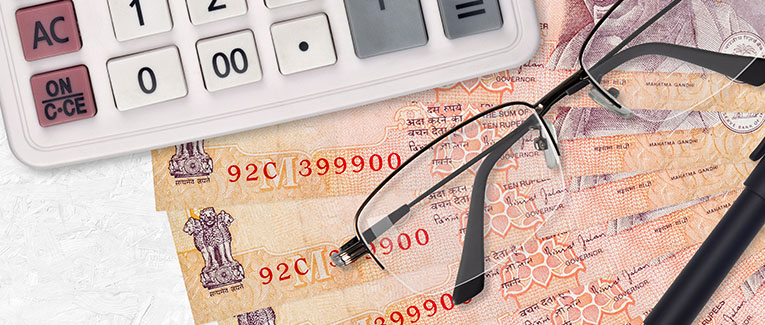
What is Capital Gains Tax?
Any profit arising from the sale of a capital asset constitutes capital gains. A capital asset is an asset that is held and sold after a rise in prices.
What are the exceptions to capital assets?
- Business stock, raw materials, or works in progress
- Farmland
- Personal assets such as furniture or vehicles
- Gold bonds issued in 1971 and 1980
- Bearer bonds issued in 1991
- Gold deposit bonds issued in 1999 and 2015
Typical examples of capital assets and gains from sale:
- Mr. X bought an apartment in Gurgaon in 2012 for ₹1 crore. He sold it in 2019 for ₹1.8 crores.
- Mr. Y purchased 1,000 shares of Tata Steel at ₹205 each in 2015 and sold them for ₹490 each in 2019.
Note –
1 million = 10 lakhs
10 million = 1 crore = 100 lakhs
What are the types of Capital Gains?
- Short Term Capital Gains (STCG): When an asset is held for less than 36 months, any profit on sale thereof is considered short-term capital gains. The 36-month condition has changed to 24 months in the case of house property from FY 2017-18.
-
Long Term Capital Gains (LTCG): When a sale happens after 36 months, any gains arising from the transaction is treated as long term capital gains. For some assets, the 36-month rule does not apply, and they are considered eligible for LTCG after 12 months. Such assets include:
- Shares of a company, equity, or preferential listed on a stock exchange.
- Securities such as debentures and company bonds listed on a stock exchange.
- Units of UTI and units of equity-based mutual funds.
- Zero-coupon bonds.
Rates of tax
| Asset Type | Duration of Holding | Tax Payable | ||
|---|---|---|---|---|
| Short Term | Long Term | Short Term | Long Term | |
| Immovable Property | Less than 24 months | 24 months or longer | As per IT Slab | 20% with CII |
| Movable Property | Less than 36 months | 36 months or longer | As per IT Slab | 20% with CII |
| Shares listed on stock exchange | Less than 12 months | 12 months or longer | 15% | none (assumed STT paid) |
| Equity based mutual funds | Less than 12 months | 12 months or longer | 15% | none (assumed STT paid) |
| Debt funds | Less than 36 months | 36 months or longer | As per IT Slab | 20% with CII |
Notes
- Surcharge on highest tax brackets ignored. ₹5 million to ₹10 million at 10%, and more than ₹10 million at 15%
- STT – Securities Transaction Tax
Use of Indexation
Due to inflation, the value of money declines. ₹100 is more valuable today than it will be a year from now (assuming that the economy is in the normal inflation range of 5-11% and not deflationary). Thus, what costs ₹100 today would cost ₹110 next year due to 10% annual inflation.
This affects your profit from the sale of capital assets.
Let’s look at an example.
You bought a house for ₹4 crore on June 1, 2014. You spent ₹1 crore on the renovation on Oct 1, 2016. You desire to sell it in December 2019.
But the value of money has depreciated. Your total investment of ₹5 crore is worth more today than a few years back.
In other words, if you sell the house for ₹5.2 crore, you have a notional profit of ₹20 lakhs, but not actual, since ₹5.2 crore today is worth far less than ₹5 crore a few years back.
The Central Board of Direct Taxes publishes a Cost Inflation Index (CII) that is used to factor in inflation.
Let us illustrate how it works. Assume that you sold the house for ₹8 crore on Dec 1, 2019.
Indexed purchase price = (CII of the year when the sale happened/CII of the year of purchase) X Cost of acquisition.
Indexed renovation cost (or any other capital expenditure for improving/modifying a property) = (CII of the year when the sale happened/CII of the year of renovation) X Cost of renovation.
From CBDT notification we know that
CII of year 2014-15 = 240
CII of year 2016-17 = 264
CII of year 2019-20 = 289
Indexed purchase price
= (CII of the year when sale happened/CII of the year of purchase) X Cost of acquisition
= 289/240 X 40,000,000
= 48,166,666
Indexed renovation cost
= (CII of the year when sale happened/CII of the year of renovation) X Cost of renovation
= 289/264 x 10,000,000
= 10,946,969
Capital Gains = 80,000,000 – (48,166,666 + 10,946,969) = 20,886,365 or ₹2.09 crores approximately (Notional profit is 3 crore.)
Of course, by its very nature, it applies only to LTCG.
This was an elementary example. In case the purchase was many years ago (e.g., 1985), the base year is taken as 2001-02 with a CII of 100.
Fine Print of LTCG
There are several legal points other than the plain accounting calculations shown above.
Such as, if the property is inherited, then the year of purchase is not relevant. The year of inheritance is taken into account instead. Due to the brevity of this article, such points cannot be discussed with any level of detail.

